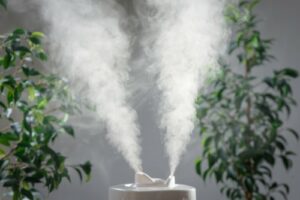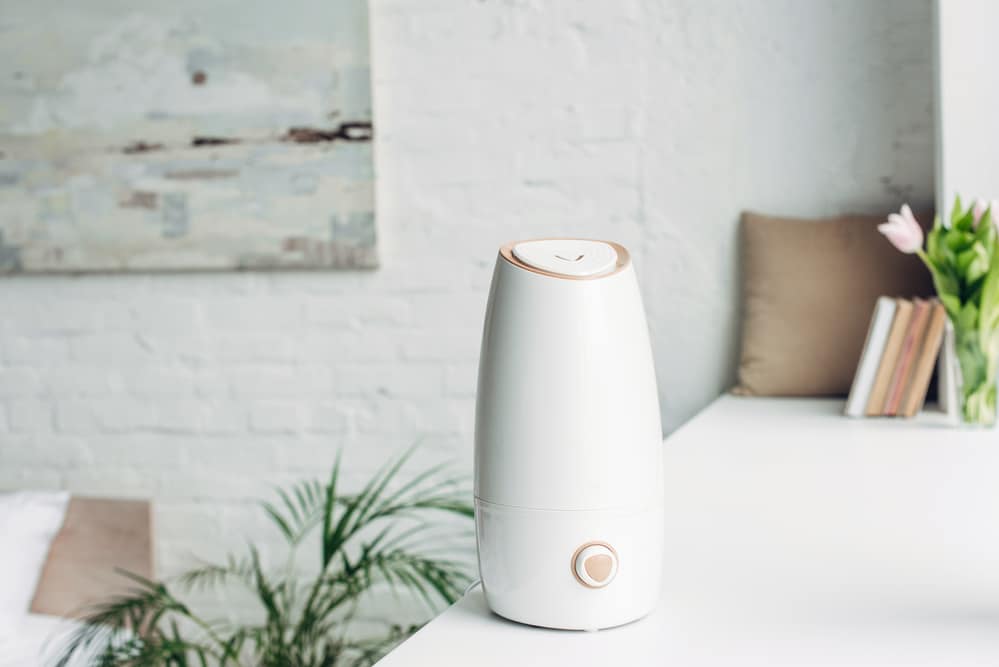Last Updated on February 24, 2023
An air purifier is an appliance that filters different particles from the air and improves the quality of air in your home. It removes dust mites, cigarette smoke, and nasty odour from the air. Since indoor air might have more pollutants than outdoor air due to a lack of airflow, an air purifier might be an essential tool for getting rid of indoor pollution and making air cleaner.
If you are allergic to pet dander or small pollen particles, an air purifier may be an ideal home appliance for you. It minimizes the health effects that might be caused by such particles by improving the indoor air quality in your home.
Exposure to dust particles and air pollutants also worsens health issues like asthma. Some of the symptoms that are associated with exposure to dust particles include coughing, wheezing, tight chest, and breathlessness.
In this post, we are going to take you through the ins and outs of exactly what is an air purifier. Let’s dive in.
How Does an Air Purifier Work?

An air purifier comes with a fan for sucking air in. It also features a fan that removes pollutants from indoor air.
Air is sucked into the air purifier through the fan, then it moves through various filters that trap airborne particles and smoke. Once the air is free of indoor pollutants, it is released back into the room as clean air.
Filters are created using a variety of materials, including mesh, fibreglass, and paper. Such filters purify the air in your home. Many have to be replaced regularly to work efficiently.
The frequency of filter-replacement depends on the type of air purifier that you are using. Some are replaced regularly every six months, while others are replaced after a longer period of a year.
Since air purifiers have various types of filters that eliminate pollutants from the air, we will give an overview of each filter. These are some of the different types of air filters that air purifiers feature:
Pre-Filter
Located between the fan and other air-purification filters, a pre-filter gets rid of different micro-particles that might be present in the air. It is the first filter that air comes into contact with.
The pre-filter protects other components by removing particles that might cause mechanical-damages to other parts of the purifier. It is also washable, making it easier for you to remove some of the particles that might be captured.
HEPA Filters (High-Efficiency Particulate Air Filter)
Made from a fibre material that has a very tight weave, a HEPA filter is very effective in removing particles. As if that’s enough, the HEPA filter is air-tight and has fibres that are secured in a metallic frame.
The HEPA filter has a powerful air filtration system that captures particles using various mechanisms. For instance, medium-sized particles are filtered out through interception—particles that come into contact with the fibre material are filtered out. As if that’s enough, larger particles are filtered out through impaction. Fine particles are filtered through diffusion. Most air purifiers use HEPA filters to remove pollutants from the air.
Activated Carbon Filter
Activated carbon filters are designed to get rid of the bad odour that is associated with indoor air pollution in your home. It is made from carbon beads, which clean the air and get rid of nasty odour gases.
Photocatalytic Air Filtration
This is a feature that can be switched on and off, depending on your preferences. It absorbs pollutants that might be present in your home through an oxidation and reduction process.
Which Particles Are Filtered Out by an Air Purifier?
Multiple air filters are designed to capture airborne particles, volatile organic compounds, particulate matter, and negative ions.
While some air filters might get rid of different gases from the air in your home, most basic air filters might not have an advanced carbon filter for getting rid of the nasty odour in the air. Air filters that come with an advanced carbon filter can get rid of different toxic gases like ammonia, formaldehyde, hydrogen sulphide, benzene, and bleach vapour. Once such gases are removed from the air, the bad odour that might be present in the air is eliminated.
As if that’s enough, air purifiers can also capture bacteria, dust mites, diesel particles, animal fur, pesticides, and fungi.
Is an Air Filter Suitable for You?
Now that you already have an idea of what is an air purifier and the ins and outs of this device, you should consider whether you need an air purifier not. Well, an air purifier might be a suitable home appliance for you if you have specific needs such as:
Asthma

If you have an underlying condition such as asthma, an air purifier might be a suitable appliance for getting rid of the odour and chemicals that may be present in the air. Air purifiers that have an HVAC filter are the most suitable for filtering such particles from the air within your home.
Allergy
If you have an allergy that is triggered by certain particles, you should look for an air purifier that is developed for allergy relief.
Smoke
An air purifier might be suitable for you if you are allergic to smoke and soot. Some air purifiers have an advanced filtration system that gets rid of soot and smoke from your home air, making it easier for you to breathe easily. These should be considered if you regularly use your fireplace.
Hay Fever
This is an allergic reaction that is caused by pollen. It worsens when pollen grains come into contact with various parts of your body, like your eyes or your nose. People with hay fever should look for an air purifier that is effective in removing pollen grains from polluted air.
Sensitive to Chemicals
Some air purifiers are made to handle MCS (multiple chemical sensitivities). Such purifiers might be suitable for you if you are sensitive to chemicals that might be present in the air.
Pets
Since pets might have fur that may trigger allergic reactions, some purifiers are designed to handle pet dander, hair, and odour.
Factors to Consider When Buying an Air Purifier
These are some of the things you should consider while looking for an air purifier:
Room Size
Air cleaners are available in different sizes, which have different performances. You should choose an air cleaner according to the size of the room that you are planning to install it in. If you have a large living room, then you should look for an air purifier that can purify large volumes of air.
Noise Rating
Home air purifiers emit a certain amount of noise, depending on the size of the fan. Some emit more noise, while others emit minimal noise. The amount of sound that is emitted is measured in decibels (dB). The lower the decibel level, the lesser the noise levels. The average decibel level of an air purifier should range from 36dB to 45dB. Therefore, air purifiers that are ideal to be installed in a bedroom should have a very low decibel level so as not to disturb your sleep.
Air Change per Hour
As the name hints, this is the volume of air that an air purifier can filter per hour. Also known as ACH, this is the number of times that air is filtered and purified. The ACH of a high-quality air purifier should be more than 4. Not to mention, the clean air delivery rate shows you the amount of air that is filtered per minute.
Filter Replacement
Since air purifiers are made from different types of air filters, the duration of filter replacement may differ from one filter to another.
Energy Efficiency Rating

This is the amount of energy that an air purifier uses to filter out particles from the air. It is advisable to use an energy-efficient air purifier that doesn’t use too much power to function.
As if that’s enough, some air purifiers have an energy star rating—this means that they are 60 per cent more effective in saving energy than normal air purifiers. One of the easiest ways to know whether an air purifier is energy efficient or not is to check the energy star rating.
Over to You
Clearly, an air purifier is a device that gets rid of pollutants that might be present in a room. Since this device is quite effective in removing pollutants from the air, it reduces some of the respiratory health risks that might be associated with pollutants. Not to mention, it also improves the quality of the air in your home.
Air purifiers are also available in different designs. Some have ozone generators, while others have a HEPA filter. Make sure that you choose the one that suits you the most. Once you get the perfect air purifier for your home, run a number of tests to check whether it functions properly.
Now you know what is an air purifier and what it can do, we hope you can enjoy fresh air throughout your home from now on.

Ian loves everything that revolves around the home improvement niche. He loves trying out new home appliances. He has also handled a lot of equipment and has a lot of insight. Plus, he’s worked on various home improvement projects that became a success. If Ian isn’t busy working on his latest project, you can find him reading up about another one!

